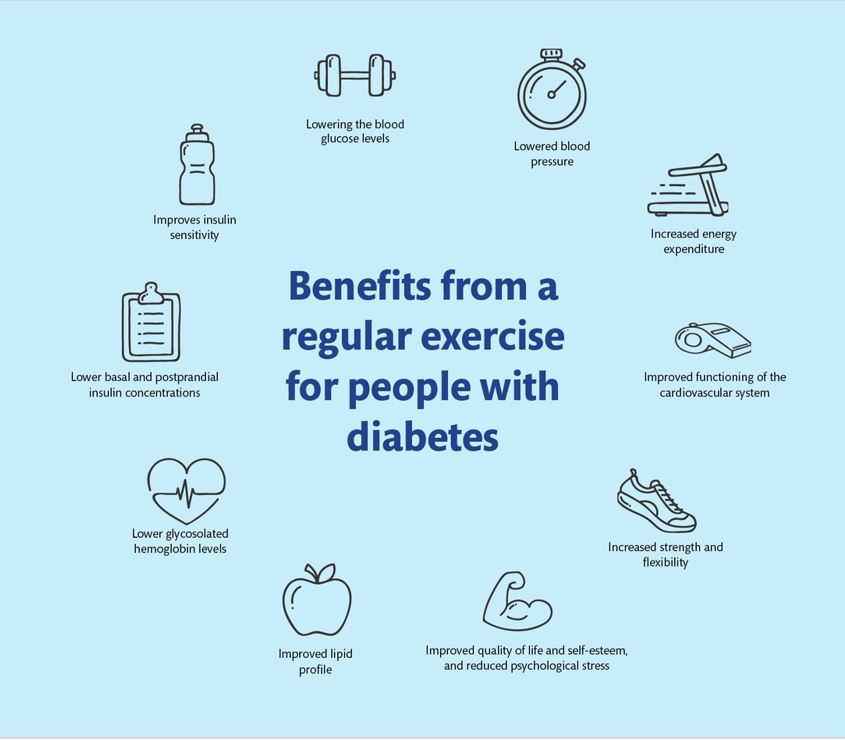Diabetes has emerged as a major public concern. The approaches must be efficacious, sustainable, and affordable to manage the disease. 4 types of diabetes can affect a person. Type 1, type 2, prediabetes, and gestational diabetes. About 90 to 95% of people diagnosed have type 2 diabetes. 5 to 10% have type 1. Gestational diabetes affects mostly pregnant women during maternity, and 1 out of 5 people in the US don’t know they have diabetes, and they come under prediabetes type.
Diabetes is a chronic health disease; it affects the human body when the pancreas does not produce the required insulin (a naturally occurring hormone that helps regulate blood glucose) or when the body cannot use produced insulin effectively. People often check for is type 1 diabetes preventable or not. Efforts to prevent diabetes are necessary, as they could significantly contribute to lowering the rate of new cases of diabetes.
Exercise is an all-season activity that one should perform to stay healthy and prevent uncertain health complications. This page will cover all possible facts about how exercise can help prevent diabetes-related complications. Patients with Type 1 and Type 2 diabetes need regular exercise or physical activity to manage their health.
Learn more about Type 1 and Type 2 diabetes prevention strategies
With no cure, one must make efforts to prevent diabetes. Prevention of diabetes can be done at various levels:
Primary prevention
Prevention of the onset of diabetes in an individual. It means intervention before the development of diabetes. The goal of primary prevention is to help those who are more likely to develop diabetes and hence prevent or postpone the onset of the disease by developing a more active lifestyle and choosing healthy eating habits.
Secondary prevention
Prevention of the disease’s progression and prevention of the onset of complications.
Tertiary prevention
Prevention of the progression of diabetes-associated complications and their prompt management, including a set of interventions specially created to optimize the functioning and reduce disability in people with health conditions interacting with their environment.
Can type 1 diabetes be prevented? Type 1 diabetes offers limited scope for prevention. Primary prevention of Type 1 diabetes target the general childhood population with vaccines or by arresting the immune process, thus preventing or delaying the progression of the disease. Secondary prevention combines a combination of therapies such as anti-inflammatory agents, immunomodulatory agents, or agents that helps to improve glucose control). Unlike Type 1 diabetes, type 2 diabetes has a long asymptomatic pre-clinical period and has established risk factors where interventions are possible. Therefore, primary prevention of type 2 diabetes is reasonable, and several studies have tried to prevent the onset of type 2 diabetes from the prediabetes state.
Although it is widely believed that type 2 diabetes results from a complex interplay between genetic and environmental factors, compelling evidence from research suggests the major reason behind the current worldwide diabetes epidemic is dietary and lifestyle changes. How to prevent diabetes? Clinical studies suggest that most cases of type 2 diabetes can be successfully prevented through moderate diet and lifestyle modifications.

Strategies for the prevention of diabetes
Two major strategies have been evaluated for reducing the incidence of diabetes, including lifestyle interventions and drug therapy. The strategies aimed at changing the risk factors profile of diabetes. Obesity is one of the major risk factors for diabetes; thus Therefore, the question arises How to prevent diabetes through lifestyle interventions?
Nutrition
Dietary habits are the personal decisions individuals make when choosing nutritional needs. Nutrition therapy is generally suggested for primary, secondary, and tertiary prevention. Evidence suggests that the quality of fat and carbohydrate play an important role over quantity. Thus strategies should emphasize involving the replacement of saturated and trans fats along with unsaturated fats and the replacement of refined grain products with whole grains. Studies have also suggested a role for coffee, nuts, dairy, calcium, and magnesium in preventing diabetes.
Physical activity
Increasing physical activity and changing sedentary lifestyles, such as prolonged TV watching, are crucial for maintaining body weight and maintaining body weight, and improving insulin sensitivity. Exercise is undoubtedly one of the first diabetes management strategies suggested for newly diagnosed type 2 diabetes patients. A combination of a balanced diet and lifestyle modification is crucial for diabetes and obesity prevention. Exercise supports glucose regulation, including aerobic or resistance training or a combination of both activities. Additionally, high-intensity interval training is also extremely efficient. It is recommended that around 30 to 40 minutes of physical activity, like brisk walking, should be encouraged for at least five days a week.
The benefits of physical activity include improved insulin sensitivity, reduction in overall weight and obesity, and improved glucose tolerance. Sticking to an exercise regimen over the years can be tough. However, dietary modifications and physical activity are considered best for diabetes prevention.
Lifestyle interventions
Lifestyle measures, which include medical nutrition therapy and physical activity, aim to address the issue of overweight and obesity, improve insulin sensitivity, prevent the progression of impaired glucose tolerance and impaired fasting glucose, and control inflammation.
Drug therapy for prevention
The focus is on preventing diabetes with medications that are used for treating diabetes as well. In people with obesity, orlistat has been shown to reduce the risk of diabetes.
Summary
Primary prevention includes the promotion of health and the reduction of risk factors through the individual. Secondary prevention refers to the time after diagnosis of diabetes; tertiary prevention is defined as the time after diagnosis of diabetes, and tertiary prevention can occur when significant numbers of beta cells (produce insulin hormone in a regulated manner to maintain circulating glucose concentrations). Primary prevention is particularly important in type 2 diabetes because dietary and lifestyle modifications can influence the time of diagnosis and the severity of the disease. However, despite this awareness, there is still no universal dietary approach for managing and preventing diabetes.
A healthy diet, regular physical activity, balance body weight, and moderate alcohol consumption result in adequate glycaemic control.
Also Read: Understanding Diabetes: Symptoms, Causes, and Types
admin
Latest posts by admin (see all)
- What is Triluma Cream? Uses, Benefits, and How It Works for Skin - December 26, 2024
- What Causes Dark Spots? Understanding the Science of Hyperpigmentation and How Skin Lightening Products Help - December 26, 2024
- Tretinoin Gel vs. Cream: Which Formulation is Right for Your Skin? - December 20, 2024



